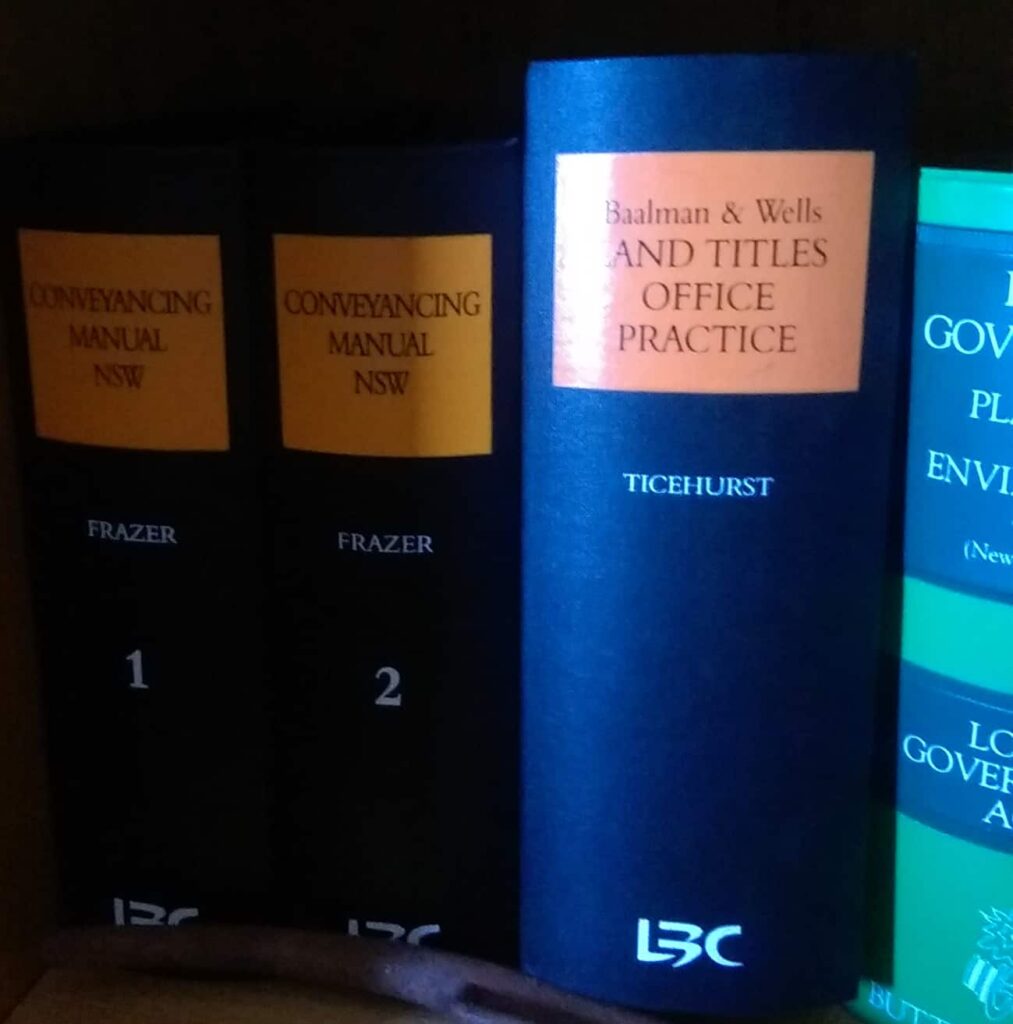Doherty Smith & Associates is now Compass Consulting Surveyors
Click here to see this blog and more on our new website compasscs.com.au
Most land in NSW is held under Torrens Title. Torrens Title is a form of title which offers a secure title to land, guaranteed by the state. Purchasers of land do not need to establish a chain of ownership as the certificate of title document traces the evidence of ownership of land. Land which was alienated from the crown prior to 1863 which has not been converted to Torrens Title is Old System land. Title to Old System Land is not guaranteed by the State of New South Wales and purchasers must carefully examine the chain of title for the land to ensure that the seller is the valid title holder and to know what reservations and encumbrances affect the land. Old System land can be converted to Torrens Title by way of Primary Application.
Old System land which has been converted to Torrens Title may have limitations relating to the boundaries of the land. These occur where the boundaries of the old system land have not been adequately defined by a plan of survey. In such cases, the certificate of title for the land will have a limitation recorded on the Register of title explaining that the description of the land has not been investigated by the Registrar General and that the boundaries are not guaranteed until defined in a new plan of survey. Qualified title is a converted Old System title which has a caution recorded in the folio of the Register that has not been cancelled. A caution indicates that the land is held subject to any ‘subsisting interest’ that may exist under Old System.
A Primary Application is an application to being Old System Land under the provisions of the Real Property Act 1900. The owner of Old System Land may apply to Land and Property Information NSW to convert the Old System title to Torrens Title. In addition to converting Old System land to Torrens Title, a primary application may claim land which is not in the ownership of the claimant if sufficient facts are proven to show that the right of the owner to claim the land is barred. The key factor to consider when attempting to claim adverse possession of land is the period of time that the land has been occupied by the claimant. Under Section 38 of the Limitation Act 1969, the minimum period of time which will be considered as occupation is set at 30 years for a claim against the Crown and 12 years for anyone other than the Crown.
Evidence must be submitted in order to make a claim of possessory title, including:
- A list of the documentary title to the date of application
- A statutory declaration detailing the name and address of the person or persons who may, according to the documentary title, have an interest at law in the subject land at the date of the application
- A list of the devolution of the possessory title from the date of the claim to the date of the application. The devolution of the title is the passing of title to land by the operation of law such as by a will or by the laws of distribution out of an intestate estate
- Statutory declarations by the applicant and as many disinterested witnesses as practicable which assert, to the best of their knowledge and belief, the circumstances under which the possession of the land commenced, the manner and extent to which the land has been used and occupied, the nature of improvements upon the land, ages of fencing and improvements upon the land. Declarations should make reference to a plan which clearly identifies the land and indicates the nature of existing improvements and occupations (fences, walls etc) upon it. It is recommended that at least three statutory declarations be submitted.
- A letter from Council indicating who has been assessed for the purpose of rating in relation to the land being claimed and who has paid the rates during the period of possession.
When submitting a Primary Application, a new plan of survey must also be prepared and submitted with the application for registration as a deposited plan. The title of the plan must list all land included in the survey. This may include Torrens Title land, in which case the certificate/s of title for this land must be produced at LPI.
A plan submitted with a Primary Application must be a new plan of survey. The plan will be registered as a deposited plan. If a plan includes Torrens Title land, the certificate of title for the Torrens title land must be produced at Land and Property Information NSW in order for the plan to be registered. If the plan requires the consent of Council or any other authority, these consents must be obtained.
The consequence of the rules in relation to occupation and adverse possession have led to a situation where surveyors, sometimes in error, adopt fencing as a boundary of Old System land rather than claiming land past the fence which was described in the original deed, or claim additional land inside the fence which was never intended to be part of the subject land. The latter situation is often justified under adverse possession legislation, however failure to claim full deed dimensions on a parcel of land may have unintended consequences.
A surveyor must carefully examine not only the survey evidence, including any survey marks on the ground, occupations or buildings, and fencing, but also the chain of Old System deeds which led to the current boundaries. While a boundary shown on an old plan may have adopted an old fence, the boundary of the land by deed may mean that there is a sliver of unclaimed land left over from the original lots. It is possible that, by adopting a fence rather than investigating further and possibly claiming full deed dimensions for a parcel of land, a hiatus is created. A Hiatus is a piece of land that has been left out of adjacent surveys, and will generally remain in the ownership of the owner of the land prior to the subsequent survey plans being registered, or revert to the Crown. In many cases, the owner of the land in a hiatus may have passed away, but this is not necessarily the case. If a hiatus is created, it may be possible for adjoining owners to claim this land as part of a primary application under adverse possession. In many cases, however, the value of the land does not justify the expense of a survey and other costs involved with a primary application.
If a surveyor finds old fences that exceed the occupation periods, but still believes that the deed dimension is available past the fence, the survey can claim to the deed dimension, provided consent is granted by the adjoining owner or owners. If the adjoining owner or owners do not give consent to the claim to deed distance beyond the fence, this does not necessarily mean that they automatically own to the fence, and such a situation may lead to the creation of a hiatus. If the adjoining owner consents to the definition of the boundary at deed dimension even though it may mean claiming land past an old fence, the boundary can be adopted at deed dimension and the plan registered. If a boundary is unable to be determined by survey, often the best way to proceed is to find consensus between adjoining owners wherever possible, then proceed by adopting the boundary based on the agreement of both owners. Failure to claim deed dimensions may result in a hiatus being created, which remains in the ownership of the owner at the time of survey. A Hiatus created in this manner will be created as a lot and rated by Council, even if the land is inaccessible or too small to be practically used.
There are limitations when a claim is against the Crown. Section 170 of the Crown Lands Act 1989 sets out limitations on acquisition of title by possession against the Crown. This section of the act prevents anyone from claiming title by adverse possession against the Crown if that land has been:
- set out as a road under an Act or in connection with the alienation of land of the Crown,
- left between Crown grants for use as a road or driftway,
- dedicated under the Crown Lands Acts or any other Act for a public purpose, or
- reserved in a Crown grant or recorded in a folio of the Register as being reserved to the Crown.
Primary Applications are a complex area of land title legislation and surveying practice, and must be carefully prepared with consideration to multiple factors. It is easy to get caught out as a land owner, but also from the point of view of a surveyor. When dealing with Old System land, land owners should ensure that they are dealing with an experienced and reputable surveyor to prevent possible issues, including failure to claim deed dimensions on Old System land, leaving a hiatus which will be created as a lot and rated by Council, even if the main part of the land is sold. If you require further information on primary applications and adverse possession, please see fact sheets released by Land and Property Information NSW, the NSW Registrar General’s Directions or contact a registered surveyor.
Eric Smith
Registered Surveyor
Doherty Smith & Associates




